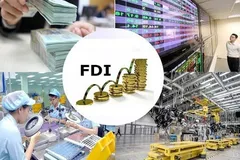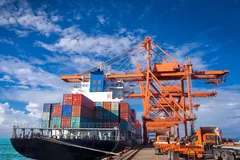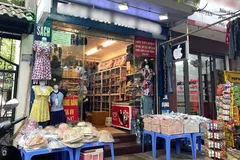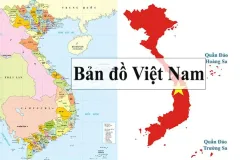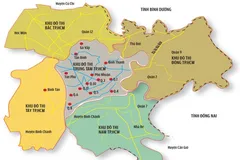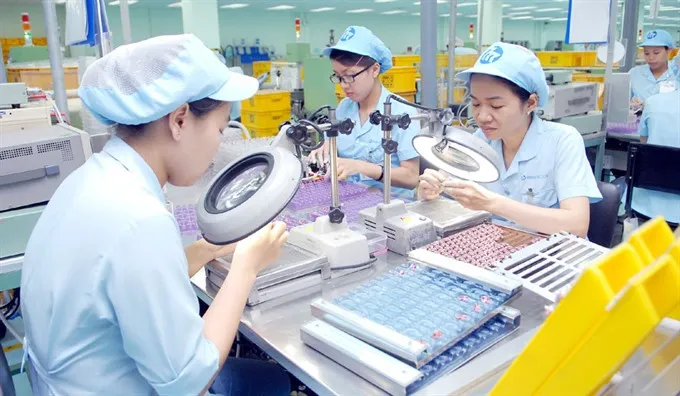
However, for FDI to serve as a genuine driver of national development, it must evolve from a parallel force into a collaborative partner—working in concert with the domestic private sector, not apart from it.
The Disconnect: Domestic Firms Left Behind
Over the past three decades, Vietnam has become a standout success in attracting FDI, which now serves as a vital pillar of its economic development strategy. Yet a troubling gap persists: the limited spillover from FDI to local private enterprises. Many Vietnamese companies—particularly small and medium-sized enterprises (SMEs)—remain disconnected from the supply chains of foreign-invested firms, leaving much of the country’s FDI potential untapped.
This disconnect means Vietnam risks missing out on the deeper benefits of the free trade agreements (FTAs) it has so ambitiously pursued. While FTAs open doors to global markets and introduce world-class governance and technology standards, they don’t automatically generate economic development. That requires domestic strength and capability to absorb, adapt, and leverage these new opportunities.
Instead, foreign-invested companies in Vietnam often operate as self-contained ecosystems. They bring their own supply networks, governance structures, and technologies—rarely integrating with domestic firms or transferring capabilities. Vietnamese businesses are often limited to peripheral roles, such as providing basic packaging or logistics, without access to high-value functions like design, R&D, or advanced manufacturing.
Several interlocking factors contribute to this divide. First, many domestic firms lack the technical capacity, capital, and international certifications needed to join global supply chains. Second, foreign companies tend to prioritize their pre-existing global suppliers and are often hesitant to take on the perceived risks of working with local partners. Finally, Vietnam’s FDI policies have historically emphasized investment volume over qualitative metrics like linkages with the domestic economy, knowledge sharing, or long-term capacity building.
The outcome is a paradox: Vietnam ranks high for FDI inflows, but its industries—especially in key sectors like electronics, automotive, and mechanical engineering—remain low on domestic value added. This structural imbalance has serious implications for resilience, innovation, and equitable growth.
Toward a Mutually Reinforcing Relationship
To move beyond this FDI “enclave” model, Vietnam needs to establish a synergistic relationship between foreign-invested and domestic enterprises—one built on mutual benefit and collaborative growth. This shift requires strategic policy adjustments and institutional innovation along five key dimensions:
Vietnam should undertake a strategic reconfiguration of its industrial and investment planning. That means clearly defining the roles of FDI and domestic enterprises within key value chains. Such clarity can help ensure targeted support for Vietnamese firms in sectors where they have comparative potential, while encouraging FDI in ways that complement and strengthen the domestic base.
Instead of focusing primarily on the size or nominal technology content of FDI projects, policymakers should adopt more rigorous and forward-looking criteria. These should include a company’s willingness to partner with local firms, its roadmap for localizing supply chains, its plans for technology transfer, and its commitment to workforce training. FDI should not just bring capital—it should help build capacity.
Tax breaks, land access, and credit preferences should be made contingent on demonstrable efforts to partner with domestic suppliers. For example, FDI firms could be eligible for additional incentives only if they meet specified thresholds of local sourcing or supplier development. This not only strengthens local businesses but also encourages FDI firms to adapt more fully to Vietnam’s economic environment.
Technology spillovers don’t happen by accident—they need to be orchestrated. Vietnam should invest in intermediary institutions such as innovation hubs, R&D partnerships, and technical support centers that actively connect FDI companies with domestic firms and research institutions. Facilitating co-development projects between foreign and local partners can accelerate both innovation and local capability building.
No collaboration can succeed without a capable human capital base. Vietnam must invest heavily in workforce development programs that prepare local talent to meet the standards of global industries. This includes not only technical skills but also soft skills, foreign languages, and familiarity with international business cultures. A well-prepared labor force helps bridge the divide between local firms and international investors.
A Fork in the Road
Vietnam now faces a critical inflection point. Without stronger integration between FDI and domestic private firms, the economy risks becoming bifurcated: one tier dominated by dynamic, export-oriented foreign enterprises, and another characterized by stagnant, vulnerable domestic businesses. This two-tier structure undermines the inclusive and sustainable growth Vietnam aims to achieve.
Conversely, if Vietnam succeeds in forging true linkages between FDI and the domestic economy, the rewards could be substantial: stronger national competitiveness, higher local value creation, increased innovation, and more balanced growth. With smart policy and persistent execution, FDI can become more than just a source of capital—it can become a catalyst for a thriving Vietnamese private sector.






